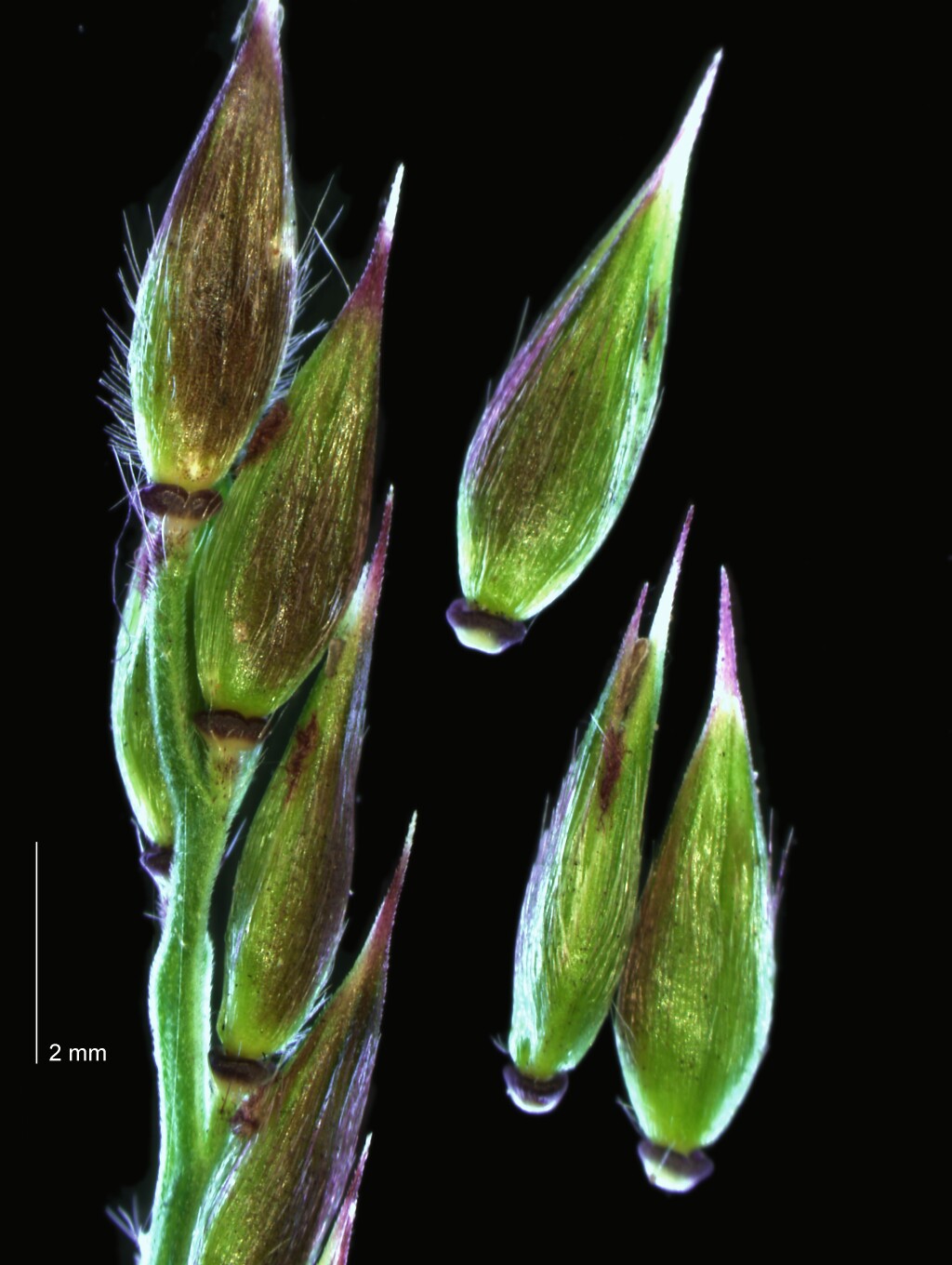Eriochloa pseudoacrotricha
(Stapt ex Thell.) J.M.Black Early Spring-grassTufted perennial. Culms erect, to c. 70 cm high, nodes pubescent. Leaves glabrous or sparsely pubescent; blade 7–20 cm long and 2–7 mm wide; ligule c. 1 mm long. Panicle 5–15 cm long, with 4–8 loosely appressed branches 3–6 cm long. Spikelets dorsally compressed, 4–6 mm long, shortly pedicellate, in two rows along the flattened branches, pedicels ciliate toward apex; lower glume purplish, c. 0.5 mm long, closely adhering to rachilla; upper glume obscurely 5-nerved, acuminate, the tip narrowed to a mucro or short awn 0.5–1 mm long, the whole as long as the spikelet, covered dorsally with white, silky hairs, slightly granular beneath the hairs; lower (sterile) lemma equal or subequal to upper glume; fertile lemma elliptic, c. 3 mm long (including a slender terminal awn c. 0.5 mm long), hardened, white, granular, sometimes finely transversely ridged. Flowers Nov.–Mar.
MuM, Wim, VVP, VRiv, MSB, MuF, GipP, OtP, Gold, CVU, HSF, HNF. All mainland states. Largely confined to irrigated areas along the lower Goulburn River (e.g. Kyabram, Rochester), and the Murray River downstream from its confluence with the Goulburn (Echuca, Kerang, Mildura areas), but locally common in these districts, with isolated occurrences Kaniva, north and west of Melbourne and Gippsland. Often prominent during wet summers.
Differing only slightly from E. crebra S.T.Blake which differs in having an acute to shortly acuminate, but not mucronate or awned upper glume. It is much rarer in Victoria than E. pseudoacrotricha.
At least some occurrences away from northern Victoria are likely to have been caused by seed inadvertently transported with stock or fodder.
Walsh, N.G. (1994). Poaceae. In: Walsh, N.G.; Entwisle, T.J., Flora of Victoria Vol. 2, Ferns and Allied Plants, Conifers and Monocotyledons, pp. 356–627. Inkata Press, Melbourne.
 Spinning
Spinning


